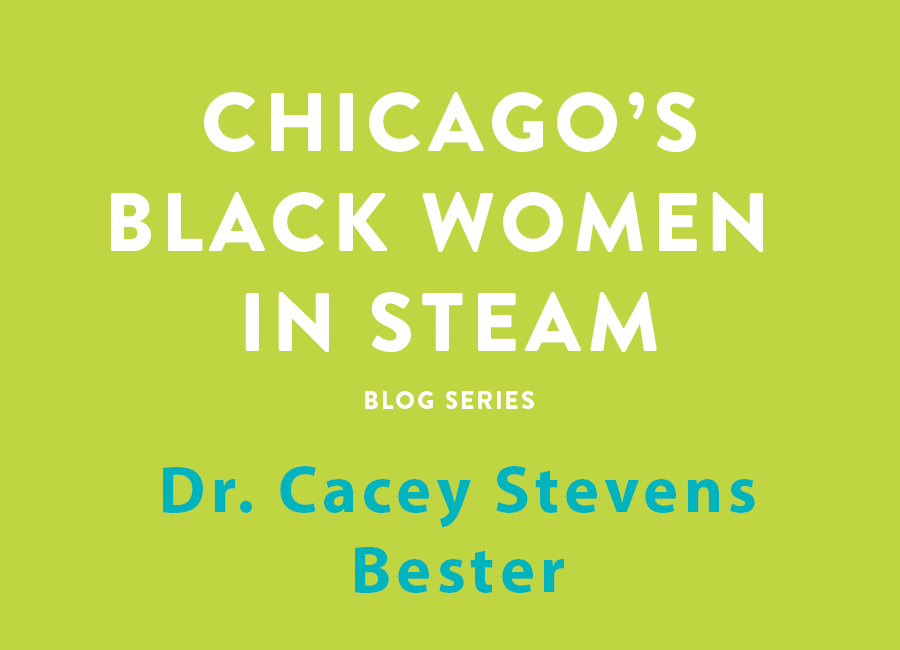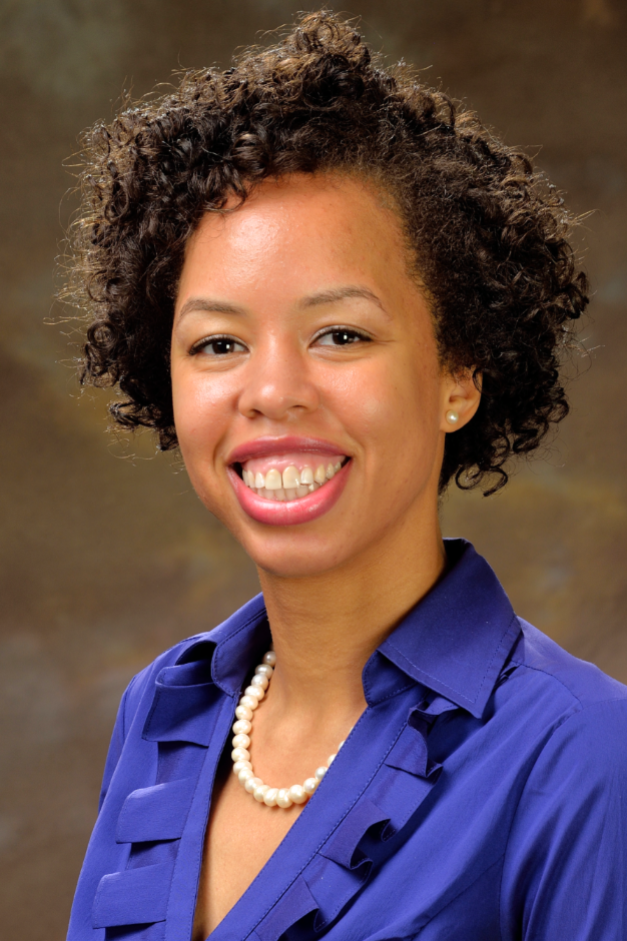Chicago’s Black Women in STEAM Series: Meet Cacey

“Chicago’s Black Women in STEAM” is a series on The Adler ’Scope that highlights the awesome women of Chicago who are doing amazing things in science, technology, engineering, art, and math fields here in our own community. Meet women of varying ages, backgrounds, and interests and learn their unique stories.
Dr. Cacey Stevens Bester
Assistant Professor of Physics at Swarthmore College

What first sparked your interest in physics?
While in high school, I found math and science classes to be the most interesting and enjoyable. My teachers encouraged me to continue in STEAM since I had a talent and interest in those subjects. During my freshman year in college, I enrolled in a course called ”Discovery in Physics” to learn more about the field as I tried to decide on the right major. It turned out that I was the only student enrolled in the course that semester! Instead of cancelling the course, the professor decided to hold a class with one enrollee. It became one of the best learning experiences of my college career. The professor shared great insights about the field with me, and by the end of the semester I was hooked! I knew then that I wanted to become a physicist. That professor is still a wonderful mentor to me and has influenced me at every stage of my career.
Were there any hurdles or challenges you faced while being an undergrad/grad student?
Once I decided to pursue a graduate degree in physics, I needed to move far away from my hometown to start graduate school. I initially felt very lonely, since I was away from my family and was very unfamiliar with the new city that I lived in. In classes, I also felt isolated. I was so different from the rest of my peers. It ultimately helped me to create a study group for my classes. I invited classmates to my apartment for dinner and studying. We all got to know each other a lot better as a result and became friends. I also started a new hobby as a way to take a break from physics and get to know people in the city. Lastly, I did, and still do, travel to my hometown often to see my family and have periods of rejuvenation.
Can you tell us more about the work you did while at the University of Pennsylvania?
While at the University of Pennsylvania, I explored ways to model geological events and phenomena through small tabletop-scale experiments. For example, my experiments involve the physics of granular media, which are large collections of solid macroscopic grains. Examples are coffee beans, cereal, or rice. They can also be sand, sediment, or boulders. Granular media can be rigid like a solid or can flow like a liquid. I am particularly interested in the transition between these two behaviors. By studying the mechanisms behind the transition within lab-scale granular systems, we hope to connect the granular physics to evolution of granular media at geological scales, such as in creeping motion of landscapes or landslides.
In the past, your research interests have included “soft matter physics.” Could you expand on what that is?
In physics, the “hardness” and “softness” of substances are defined by their response to external forces. Soft matter typically refers to materials that easily flow and are highly deformable with respect to the forces that they typically encounter. These materials typically have properties that are somewhere between solids and liquids. Examples of soft matter materials include foams, polymers, granular materials, biological materials, and gels, and are found in everyday objects.
What advice would you give to young girls of color who are interested in pursuing careers in STEAM?
As you pursue your interests in STEAM, find individuals who can serve as a support system for you. You will need people to advise, support, and advocate for you during the difficult times.
Do you have a favorite physics fact that you’d like to share?
Yes! Air causes a liquid drop, like a raindrop or spilled tea, to splash. This was a concept that I learned during one of my first physics research experiences. It also exposes the complex physics involved in such (seemingly) simple, everyday moments.







